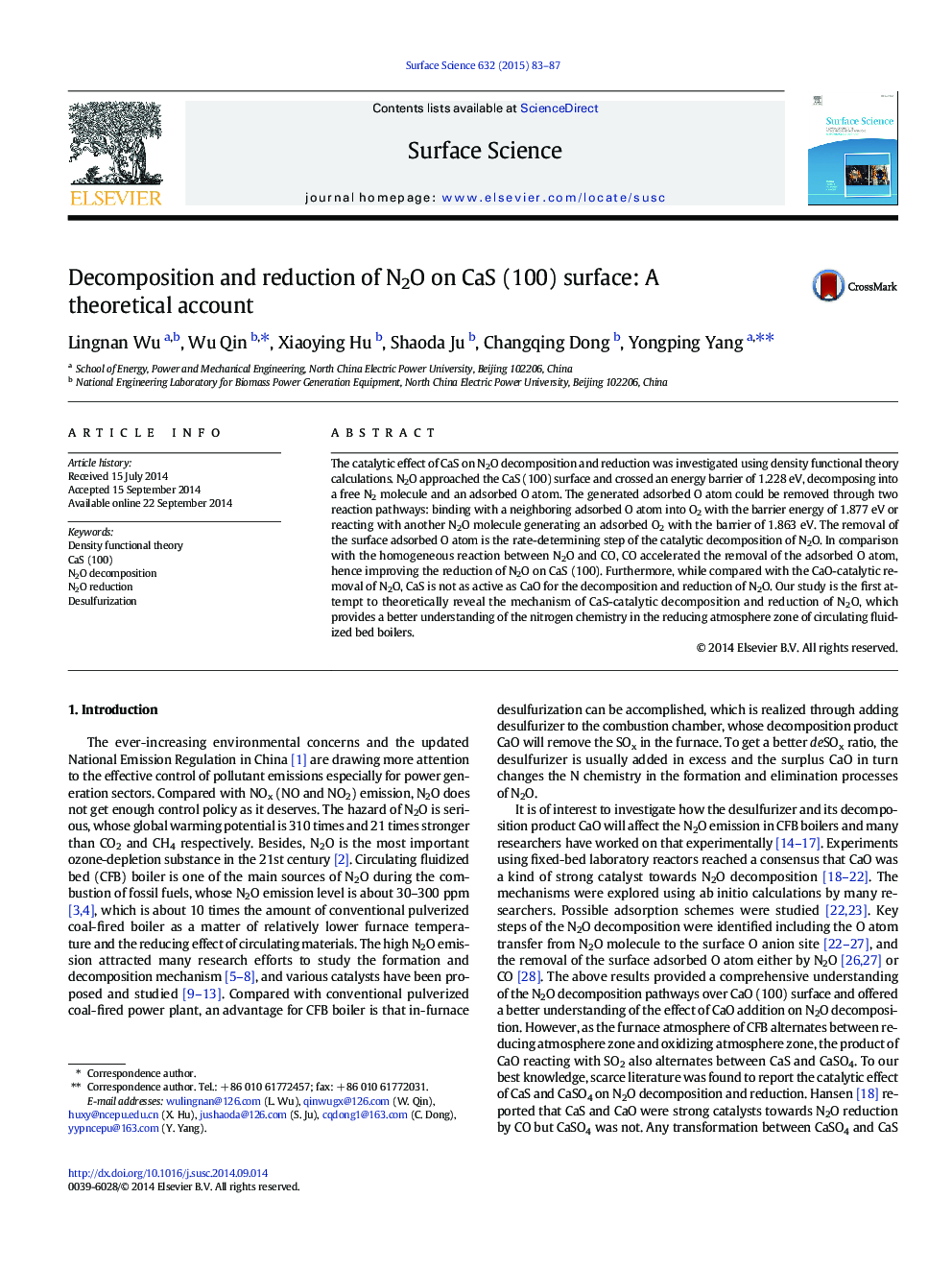| Article ID | Journal | Published Year | Pages | File Type |
|---|---|---|---|---|
| 5421991 | Surface Science | 2015 | 5 Pages |
Abstract
The catalytic effect of CaS on N2O decomposition and reduction was investigated using density functional theory calculations. N2O approached the CaS (100) surface and crossed an energy barrier of 1.228Â eV, decomposing into a free N2 molecule and an adsorbed O atom. The generated adsorbed O atom could be removed through two reaction pathways: binding with a neighboring adsorbed O atom into O2 with the barrier energy of 1.877Â eV or reacting with another N2O molecule generating an adsorbed O2 with the barrier of 1.863Â eV. The removal of the surface adsorbed O atom is the rate-determining step of the catalytic decomposition of N2O. In comparison with the homogeneous reaction between N2O and CO, CO accelerated the removal of the adsorbed O atom, hence improving the reduction of N2O on CaS (100). Furthermore, while compared with the CaO-catalytic removal of N2O, CaS is not as active as CaO for the decomposition and reduction of N2O. Our study is the first attempt to theoretically reveal the mechanism of CaS-catalytic decomposition and reduction of N2O, which provides a better understanding of the nitrogen chemistry in the reducing atmosphere zone of circulating fluidized bed boilers.
Related Topics
Physical Sciences and Engineering
Chemistry
Physical and Theoretical Chemistry
Authors
Lingnan Wu, Wu Qin, Xiaoying Hu, Shaoda Ju, Changqing Dong, Yongping Yang,
